Decoding Skin Cancer Lump On Dog: Signs, Diagnosis, And Treatment Options


As a loving and responsible pet parent, the health and well-being of your furry friend are undoubtedly of utmost importance to you. Unfortunately, just like humans, dogs can also be susceptible to various health conditions, including skin cancer.
Skin cancer in dogs is more common than you might think, and it’s essential to be aware of the symptoms, diagnosis, and treatment options available. By understanding these crucial aspects, you can take proactive steps to protect your canine companion and ensure their long and happy life.
Types of Skin Cancer In Dogs
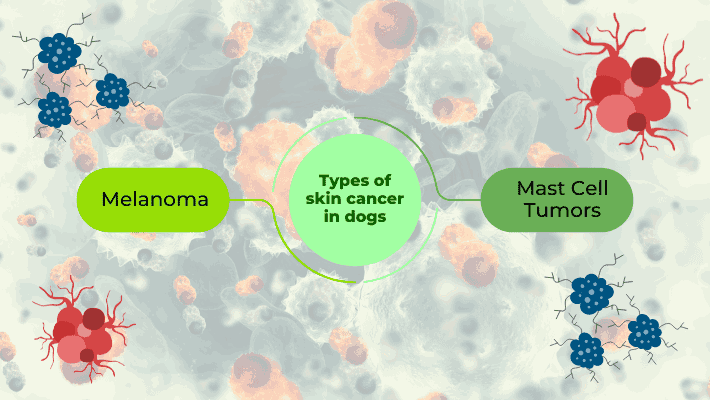
Skin cancer in dogs can manifest in different forms, each with its distinct characteristics. The most common types of skin cancer in dogs include melanoma, squamous cell carcinoma, and mast cell tumors. We have discussed these issues in detail below:
Melanoma
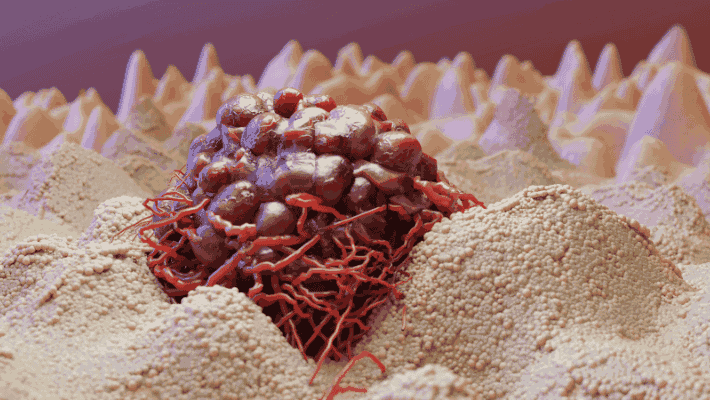
Melanoma is a type of cancer that affects the melanin-producing cells, while squamous cell carcinoma primarily affects the skin’s outermost layers. Mast cell tumors, on the other hand, originate from mast cells, which are part of the immune system. Knowing the types of skin cancer that can affect your dog will help you better understand the symptoms and potential risks.
Mast Cell Tumors (MCTs)
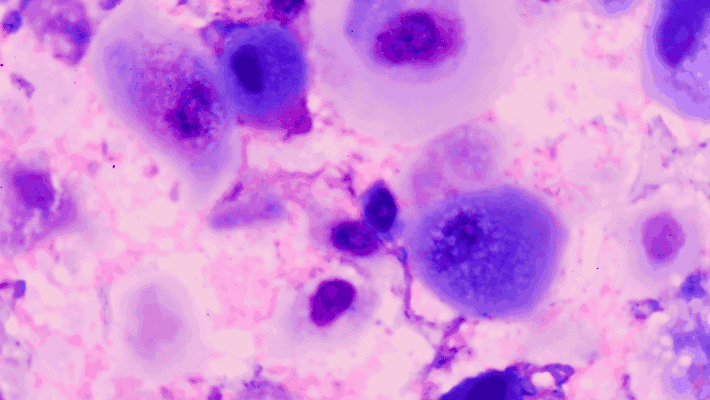
These are the most prevalent types of skin cancer in dogs. MCTs can vary in appearance, ranging from small, raised nodules to larger, ulcerated masses. They can occur anywhere on the body and may change in size or shape over time. MCTs can be benign or malignant, and their behavior can be unpredictable.
Squamous Cell Carcinoma (SCC): SCC is a malignant tumor that typically develops on areas of the skin exposed to sunlight, such as the nose, ears, and abdomen. It appears as a raised, scaly, or ulcerated lesion. SCC can be locally invasive and has the potential to metastasize (spread) to other parts of the body.
Melanoma: Melanoma is a type of cancer that originates from melanocytes, the cells responsible for producing pigment in the skin. It can occur in pigmented areas of the skin, such as the mouth, lips, and nail beds. Melanomas can be benign or malignant and may appear as dark, raised lesions or nodules.
Fibrosarcoma: Fibrosarcoma is a malignant tumor that arises from fibrous connective tissue. It commonly presents as a firm, subcutaneous mass that can be invasive and locally destructive. Fibrosarcomas can occur anywhere on the body.
Histiocytoma: Histiocytomas are benign tumors that predominantly affect young dogs. They usually appear as small, round, alopecic (hairless) nodules on the head, ears, or limbs. Histiocytomas often resolve spontaneously without treatment.
Basal Cell Tumors: Basal cell tumors are slow-growing, benign tumors that originate from the basal cells of the skin. They typically occur on the head, neck, and trunk, and present as raised, well-demarcated masses. Basal cell tumors are usually not aggressive and have a low rate of metastasis.
Symptoms of Skin Cancer In Dogs
Here are some common signs to watch for:
Abnormal Growth or Mass
Look for any unusual growths, masses, or bumps on the skin. These may appear as raised nodules, ulcers, or lumps that are different in color or texture from the surrounding skin.
Changes in Size or Shape
Monitor any changes in the size, shape, or appearance of existing skin lesions or growths. Rapid growth or enlargement of a previously stable mass could be a concerning sign.
Ulceration or Sores
Cancerous skin lesions may become ulcerated or develop open sores that do not heal. These areas may bleed, ooze, or show signs of infection.
Loss of Hair or Pigment
Pay attention to areas of hair loss (alopecia) or depigmentation (loss of color) on the skin. These changes can be associated with certain types of skin cancer.
Itching, Licking, or Scratching
Skin cancers can cause discomfort, leading to increased itching, licking, or scratching in affected areas. Persistent or localized itching should be evaluated by a veterinarian.
Bleeding or Discharge
Skin tumors that are easily traumatized or ulcerated may bleed or produce abnormal discharge. Keep an eye out for any unusual bleeding or fluid coming from a skin lesion.
Changes in Behavior or Appetite
In more advanced cases where cancer has spread, dogs may show signs of illness such as decreased appetite, weight loss, lethargy, or changes in behavior.
Difficulty Breathing or Swallowing
Certain types of head and neck tumors, such as oral or nasal tumors, can cause difficulty breathing, swallowing, or changes in voice.
Remember that these signs and symptoms are not exclusive to skin cancer and can be associated with other skin conditions as well. If you notice any concerning changes in your dog’s skin, it is essential to have them examined by a veterinarian for an accurate diagnosis and appropriate treatment. Early detection and intervention can greatly improve the prognosis for dogs with skin cancer.
How To Identify A Skin Cancer Lump On Your Dog
Identifying a skin cancer lump on your dog can be a worrisome experience, but with a vigilant eye, you can catch it early. Regularly inspect your dog’s skin by gently running your hands over their body, paying close attention to any unusual bumps or lumps. A skin cancer lump may feel firm or raised, and it could vary in size and color. It’s important to note that not all lumps or bumps are cancerous, but any new growth or change in appearance should be examined by a veterinary professional. Trust your instincts and seek expert advice if you’re concerned about any abnormalities.
Here are some steps to help you identify potential skin cancer lumps in your dog:
Regularly examine your dog
Take the time to inspect your dog’s skin on a routine basis. Look for any unusual growths, lumps, or changes in the skin’s appearance.
Pay attention to new or changing lumps
If you notice a new lump or if an existing lump changes in size, shape, color, or texture, it could be a potential sign of skin cancer. Keep track of these changes and any accompanying symptoms.
Observe the location
Skin cancer lumps can occur anywhere on a dog’s body, but certain areas are more commonly affected. Pay close attention to areas exposed to sunlight, such as the nose, ears, abdomen, and areas with thin hair or pigmented skin.
Examine the lump’s characteristics
Note the physical characteristics of the lump. Skin cancer lumps can vary in size, shape, texture, and color. They may appear raised, ulcerated, nodular, or different from the surrounding skin.
Monitor for associated signs
Watch for additional signs such as hair loss (alopecia), depigmentation (loss of color), bleeding, discharge, itching, or discomfort in the affected area. These signs can help indicate the seriousness of the lump.
Seek veterinary evaluation
If you discover any suspicious lumps or changes on your dog’s skin, it is crucial to consult a veterinarian. They can perform a thorough examination, including a fine-needle aspiration or biopsy if necessary, to provide a definitive diagnosis.
Steps To Take If You Find A Skin Cancer Lump On Your Dog
If you discover a skin cancer lump on your dog, it’s crucial not to panic but to take immediate action. The first step is to schedule an appointment with your veterinarian. During the visit, your vet will perform a thorough examination, including a physical assessment of the lump and surrounding tissues. They may also recommend additional tests, such as a biopsy, to determine if the lump is cancerous. Remember, early detection is key, so don’t delay in seeking veterinary care if you suspect a skin cancer lump on your dog.
How Is Skin Cancer In Dogs Diagnosed?

Diagnosing skin cancer in dogs requires a comprehensive approach involving various diagnostic methods. Your veterinarian may start by conducting a fine-needle aspirate, which involves using a thin needle to extract cells from the lump for examination under a microscope.
If the results are inconclusive or further information is needed, a biopsy may be recommended. A biopsy involves surgically removing a small portion of the lump or the entire lump itself for detailed analysis.
These diagnostic procedures will help determine the type and stage of the skin cancer, guiding the subsequent treatment plan.
Physical Examination
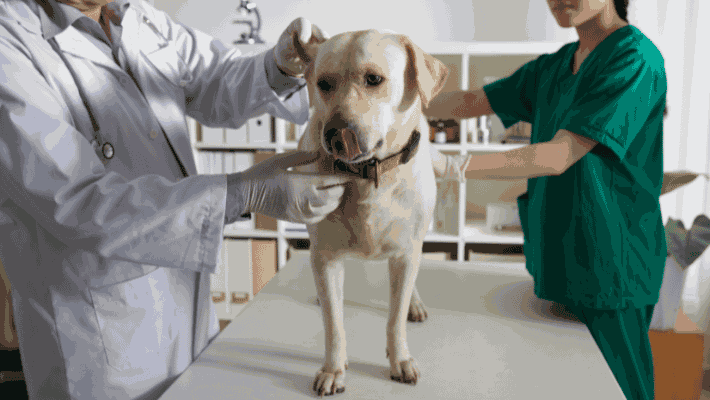
The initial step is a thorough physical examination of the dog’s skin. The veterinarian will inspect any suspicious lumps, lesions, or changes in the skin’s appearance. They will assess the size, shape, color, texture, and location of the skin abnormalities.
Fine-Needle Aspiration (FNA)
In this procedure, a small needle is inserted into the lump or lesion to collect a sample of cells. The collected cells are then examined under a microscope (cytology) to determine if they are cancerous or benign. FNA can help differentiate between different types of skin masses and guide further diagnostic steps.
Biopsy: If the FNA results are inconclusive or if a more definitive diagnosis is required, a biopsy may be performed. A biopsy involves the removal of a small piece of the affected tissue, either through a punch biopsy, incisional biopsy, or excisional biopsy. The collected tissue is sent to a laboratory for histopathological analysis, where a veterinary pathologist examines it under a microscope to determine the presence and type of cancer cells.
Imaging Techniques: In some cases, imaging techniques such as X-rays, ultrasound, or CT scans may be used to evaluate the extent of the tumor, especially if there is concern about metastasis (spread) to other areas of the body.
Blood Tests: Blood tests may be conducted to assess the overall health of the dog and evaluate organ function. These tests can provide additional information about the dog’s condition and help determine if there are any systemic effects of the cancer.
Treatment Options For Skin Cancer In Dogs
Once a diagnosis of skin cancer is confirmed, your veterinarian will discuss the most suitable treatment options for your dog. The treatment approach depends on various factors, including the type of skin cancer, its stage, and your dog’s overall health. Common treatment options for skin cancer in dogs include surgical removal of the tumor, radiation therapy, and chemotherapy. In some cases, a combination of treatments may be recommended. Your veterinarian will guide you through the available options and work with you to develop an individualized treatment plan for your furry friend.
Prevention And Early Detection Of Skin Cancer In Dogs
While it may not be possible to prevent skin cancer entirely, there are steps you can take to reduce the risk and promote early detection. Limiting your dog’s exposure to harmful ultraviolet (UV) radiation by keeping them out of direct sunlight during peak hours can be beneficial. Additionally, regularly inspecting your dog’s skin for any changes or abnormalities will help you identify potential issues early on. If you notice anything unusual, consult your veterinarian promptly. By being proactive and vigilant, you can significantly improve the chances of early detection and successful treatment.
The role of regular vet check-ups in monitoring your dog’s health
Regular veterinary check-ups play a crucial role in monitoring your dog’s overall health, including the early detection of skin cancer. During routine visits, your veterinarian will perform a thorough examination, including a careful inspection of your dog’s skin. They have the expertise to identify any suspicious lumps or bumps that might go unnoticed by an untrained eye. Additionally, they can provide guidance on preventive measures and answer any questions you may have. By maintaining a regular check-up schedule for your furry friend, you are taking a proactive step toward their well-being.
Taking Action To Protect Your Furry Friend From Cancer
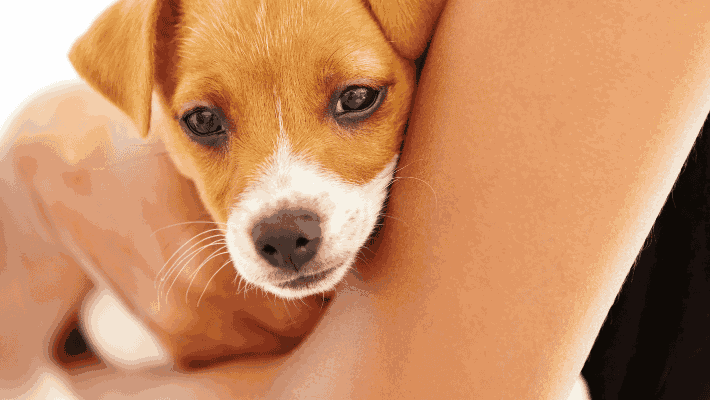
Being aware of the risks and signs of skin cancer in dogs empowers you to take action and protect your furry friend. Regularly inspect your dog’s skin, be vigilant for any changes or abnormalities, and consult your veterinarian if you have any concerns. Remember, early detection is crucial for successful treatment.
By working closely with your veterinarian, you can develop a proactive plan that includes preventive measures and regular check-ups. With your love and care, you can give your furry friend the best chance at a long, healthy, and cancer-free life. Don’t wait – start taking action today!
RECOMMENDED READING:







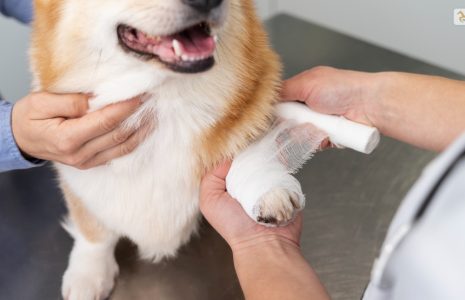
Leave A Comment